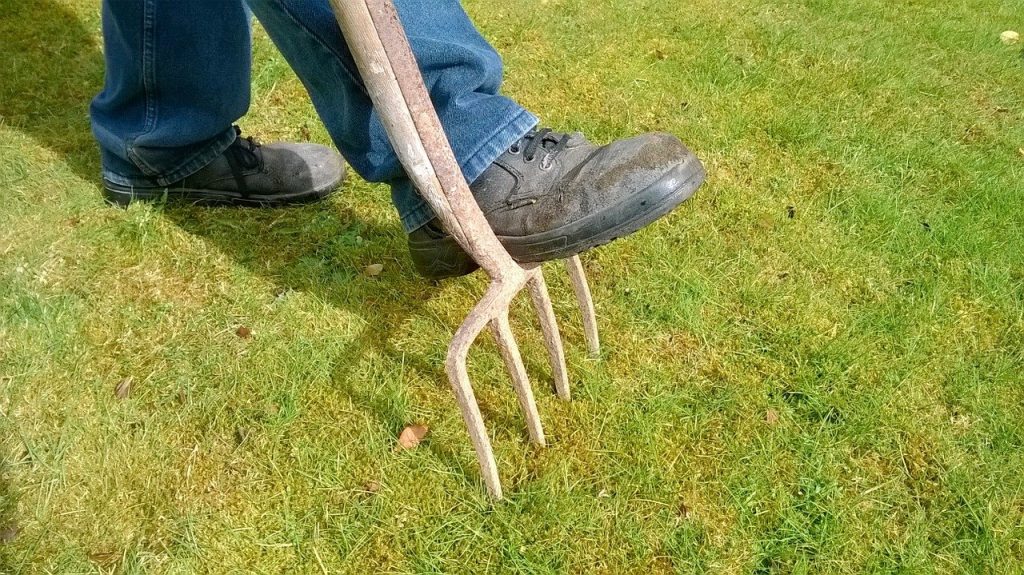Every winter, frost and snow leave their mark on our lawns. Frozen, broken and trampled grass does not look as impressive in the spring as it did after seeding. Fortunately, it does not take much to restore the lawn to its former beauty. A good fertilizer and some simple maintenance will make your lawn the envy of your neighbors.
Spring lawn renovation must begin with a thorough cleaning. Over the fall and winter, leaves, twigs and dead blades of grass have collected in the grass. This dirt makes it difficult for the new blades of grass to grow properly. A fan rake is best for removing them. They are effective and most convenient for raking the lawn
After the lawn has been cleared of debris. If there are bulges in the lawn, you should perform rolling. This will smooth out any bumps and irregularities caused by the lawn being pulled out of the ground and allow the grass to continue growing.
After raking and rolling the lawn, you can move on to aerating the soil. Aeration may sound scary, but you don’t need any complicated tools to do it – a simple pitchfork will suffice. The soil is tilled to a depth of about nine centimetres

The above steps should be taken every time you renew your lawn after the winter, for example. If you have had a lawn for several years, it is a good idea to scarify it. For this, you already need a special tool – a scarifier. This is a tool with steel blades which cuts the soil and thus stimulates the grass to grow. Scarifying also helps to remove the remains of felted grass. However, this should not be carried out on lawns which are less than two years old as it can damage the young grass
If there are large gaps in the lawn or the grass is badly worn, you can sow new self-compacting grass seed into the existing grass. Before seeding, the soil should be shoveled and the seeds should be mixed with a fertilizing substrate. After reseeding, you need to make sure that the soil is adequately watered so that the new grass can take root.
To have a beautiful and impressive lawn in the summer, you need to take care of it already in the spring. Lawn care is best done before the grass vegetation period, i.e. between February and March. Simple tasks should never be forgotten. The lawn should be cleared of moss and weeds regularly so that they do not block the growth of the grass. Tall weeds block the sunlight from the blades of grass and drain the necessary water from the soil, causing the lawn to wither. Raking the lawn of leaves, twigs and dead grass stalks also helps with daily maintenance. This prevents the grass from felting and loosens the soil slightly
It is best to wait until the grass has started to grow before fertilizing it for the first time. Fertilizer helps the lawn to regenerate more quickly, but you have to choose the right fertilizer. The component which the soil needs most after the winter is nitrogen. It makes the grass dense and green. Phosphorus strengthens the root system so that the grass can be mown earlier. Potassium stimulates healthy grass growth and makes it resistant to frost, drought and disease. The most versatile and safe fertiliser is compost. It provides all the needed ingredients in varying amounts, but the likelihood of deficiencies is negligible because no two composts are the same.
What we do to our lawn in the spring will affect its condition throughout the year. Regular and systematic lawn care definitely pays off. It’s worth investing a little time and effort in renovating your lawn after winter. This saves you the work of regenerating the grass years later. Good lawn care gives gardening enthusiasts very rewarding results!